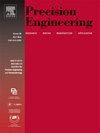The design concept and implementation of ultra-precision thinning grinder for SiC wafers
IF 3.5
2区 工程技术
Q2 ENGINEERING, MANUFACTURING
Precision Engineering-Journal of the International Societies for Precision Engineering and Nanotechnology
Pub Date : 2025-02-13
DOI:10.1016/j.precisioneng.2025.02.011
引用次数: 0
Abstract
With the rapid development of mobile communications, intelligent driving, aerospace, and other high-tech fields, the performance requirements for power semiconductor devices continue to improve. Silicon carbide (SiC), a third-generation semiconductor, has gradually replaced monocrystalline silicon (Si) due to its superior material properties. Constrained by the high hardness of the SiC, it is hard to guarantee the grinding accuracy and quality of SiC wafers using a traditional grinder with a cantilever structure. Herein, this paper elaborated the design concept of the ultra-precision thinning grinder from two aspects of material characteristics and processing requirements, and developed an ultra-precision thinning grinder for SiC wafers with an embedded gantry structure, and configured an inclination automatic adjustment mechanism, which is capable of quantitatively adjusting the relative tilting angle between the turntable and the grinding wheel spindle to realize the regulation of the total thickness deviation (TTV) of SiC wafers. The simulation and grinding comparison experiments show that the designed grinder has superior dynamic characteristics and machining quality compared to the traditional cantilever structure grinder. The grinder successfully processed 6-inch SiC wafers with a TTV of 2.26 μm and a roughness (Sa) of less than 3.8 nm, verifying that the design concept and structural design can ensure excellent machining performance.

求助全文
约1分钟内获得全文
求助全文
来源期刊
CiteScore
7.40
自引率
5.60%
发文量
177
审稿时长
46 days
期刊介绍:
Precision Engineering - Journal of the International Societies for Precision Engineering and Nanotechnology is devoted to the multidisciplinary study and practice of high accuracy engineering, metrology, and manufacturing. The journal takes an integrated approach to all subjects related to research, design, manufacture, performance validation, and application of high precision machines, instruments, and components, including fundamental and applied research and development in manufacturing processes, fabrication technology, and advanced measurement science. The scope includes precision-engineered systems and supporting metrology over the full range of length scales, from atom-based nanotechnology and advanced lithographic technology to large-scale systems, including optical and radio telescopes and macrometrology.

 求助内容:
求助内容: 应助结果提醒方式:
应助结果提醒方式:


